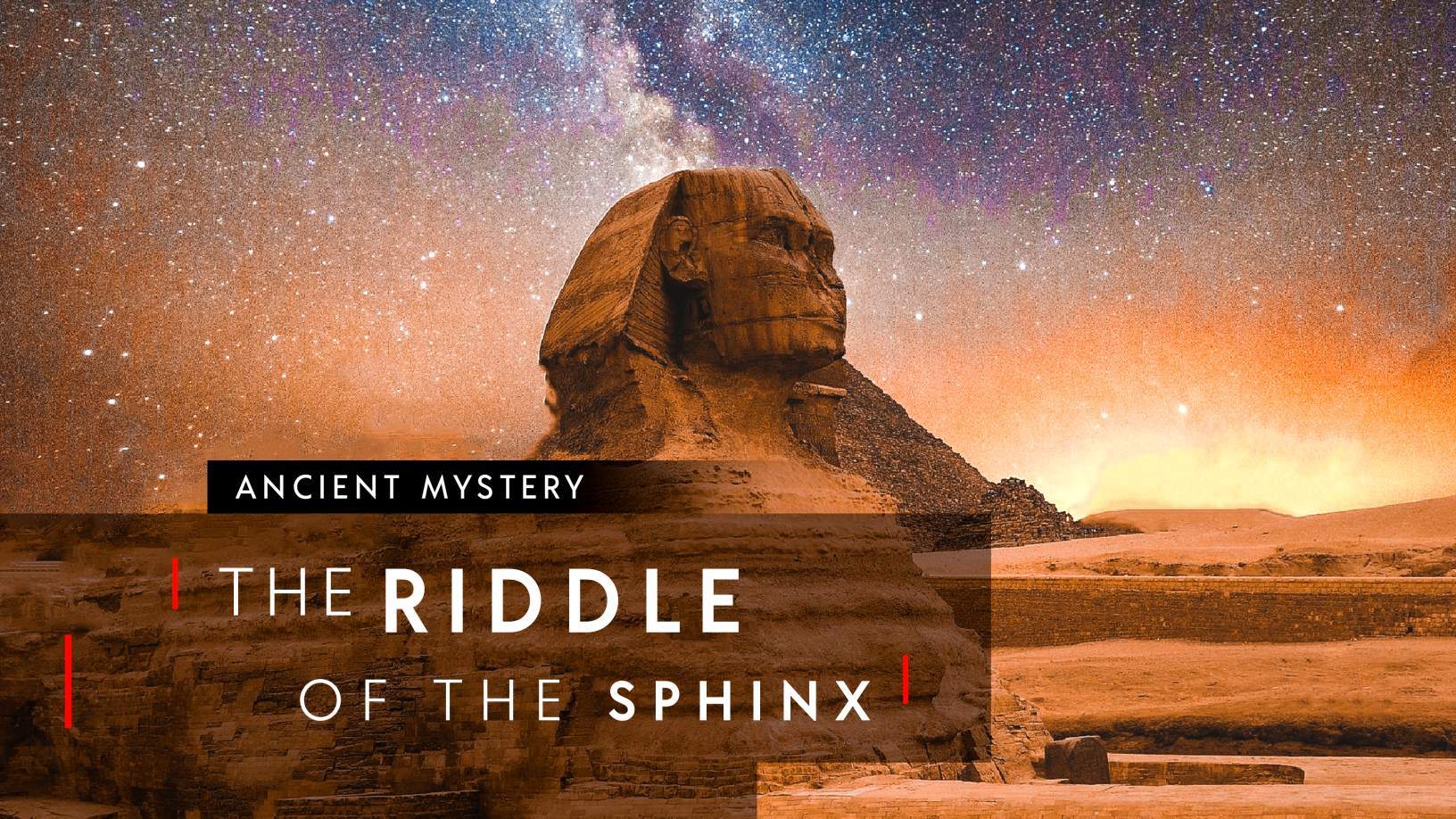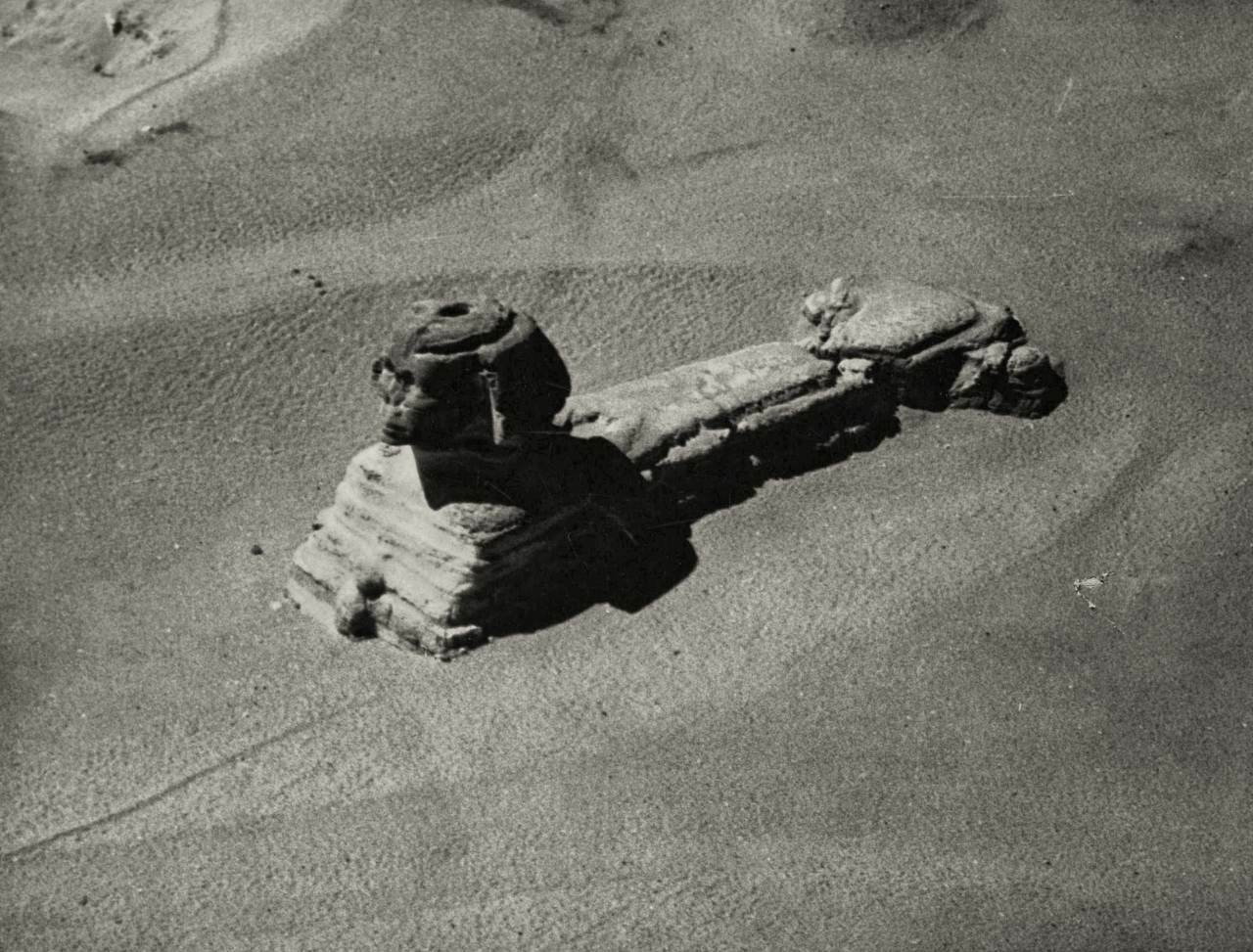Nobody really knows the actual purpose of the Sphinx. It is the oldest giant structure in Egyptian history, and is thought to have been built around 4,500 BC. Many believe that the Great Sphinx was built to watch over the plateau of Giza, serving a symbolic purpose.

The Sphinx was built facing due east, meaning that it aligns with the rising sun every day. Some later Egyptians would worship it, calling the Sphinx “Hor-Em-Akhet” meaning “Horus of the Horizon.” Today, the origin, the purpose and the legends of the Sphinx have left behind a number of intriguing riddles to be solved for humanity.
What is a Sphinx?
A sphinx (or sphynx) is a creature with the body of a lion and the head of a human, with some variations. It is a prominent mythological figure in Egyptian, Asian, and Greek mythology.
In ancient Egypt, the sphinx was a spiritual guardian and most often depicted as a male with a pharaoh headdress—as is the Great Sphinx—and figures of the creatures were often included in tomb and temple complexes. For instance, the so-called Sphinx Alley in Upper Egypt is a two-mile avenue that connects the temples of Luxor and Karnak and is lined with sphinx statues.
Sphinxes with the likeness of the female pharaoh Hatshepsut also exist, such as the granite sphinx statue at the Metropolitan Museum of Art in New York and the large alabaster sphinx at the Ramessid temple in Memphis, Egypt.
From Egypt, the sphinx imported to both Asia and Greece around 15th to 16th century BC Compared with the Egyptian model, the Asian sphinx had eagle wings, was frequently female, and often sat on its haunches with one paw raised in depictions.
In Greek traditions, the sphinx also had wings, as well as the tail of a serpent—in legends, it devours all travellers unable to answer its riddle.
The riddle of the Sphinx

According to Greek mythology, the Sphinx sat outside of Thebes and asked this riddle to all travellers who passed by. If the traveller failed to solve the riddle then the Sphinx would kill them. If the traveller answered the riddle correctly, then the Sphinx would destroy herself.
The riddle
“What goes on four feet in the morning, two feet at noon, and three feet in the evening?”
Answer
Man goes on 4 feet in the morning (crawling as a baby), 2 feet at noon (walking upright throughout most of life), and 3 feet in the evening (using a cane in old age).
Legend has it that Oedipus was the first person to answer it correctly. No one was ever capable of answering correctly until one day, Oedipus came along. Oedipus was promised the hand of the princess should he interpret the riddle correctly.
As he was famous for his wisdom, Oedipus found the answer to the riddle with ease, replying: “Man, who as a baby crawls on four legs, then walks on two legs as an adult and in old age walks with a cane as his third leg…”
The Sphinx became so frustrated about this answer that she committed suicide immediately, throwing herself from a high rock.
But it was not the only riddle of Sphinx Oedipus had to solve. In Sophocles’ play, probably the most famous retelling of the story, there’s mentioned only this riddle, but some versions of the Oedipus story have a second riddle for him to solve.
A Gascon version of the myth, for instance, has the Sphinx posing this follow-up question:
“There are two sisters: one gives birth to the other and she, in turn, gives birth to the first. What are they?”
Answer
The answer to this second riddle was also simple, which Oedipus easily solved saying, Day and Night.
How old is the Sphinx?
The most common and widely accepted theory about the Great Sphinx suggests the statue was erected for the Pharaoh Khafre (about 2603–2578 BC).
Hieroglyphic texts suggest Khafre’s father, Pharaoh Khufu, built the Great Pyramid, the oldest and largest of the three pyramids in Giza. When he became Pharaoh, Khafre constructed his own pyramid next to his father’s.
Though Khafre’s pyramid is 10 feet shorter than the Great Pyramid, it is surrounded by a more elaborate complex that includes the Great Sphinx and other statues. Residues of red pigments on the face of the Sphinx suggest the statue may have been painted.
Other theory suggests that the vertical weathering on Sphinx’s base, which could only have been caused by long exposure to water in the form of heavy rains. It so happens that this area of the world experienced such rains ― about 10,500 years ago.
Another baffling study titled, “Geological Aspect of the Problem of Dating the Great Egyptian Sphinx Construction” suggests that the Sphinx could be around 800,000 years old! It was the period when the territory of Giza was under the Mediterranean sea. Though, all these fascinating theories have been disputed by most of the mainstream scientists.
Thutmose IV’s dream
The statue of the Great Sphinx began to fade into the desert background at the end of the Old Kingdom, at which point it was ignored for centuries.
As time passed the statue was given less attention and, after a few centuries, desert sands covered the Great Sphinx up to its neck. Legends claim that visitors would press their ear to the statue’s lips seeking wisdom. Around 1400 BC, an Egyptian prince, on a hunt, came to rest in the shadow of the Sphinx.
While napping he heard the Sphinx tell him it would make him ruler of Egypt ahead of his older brothers if he promised to clear the sand away. On waking the prince vowed to keep the bargain. Sure enough, as the story goes, he ascended the throne as Pharaoh Thutmose IV and quickly had the statue uncovered.
Historians believe that Thutmose IV concocted the dream to cover up the murder. Thutmose had his brother killed so that he could gain the crown. While the Egyptian people might not have been able to forgive Thutmose the slaying for personal gain, they could overlook it if it seemed like it was the will of the gods.
By the 19th century, when European archaeologists started taking a close look at Egyptian monuments, the statue was again covered up to its neck in sand. Efforts to uncover and repair the statue were undertaken early in the 20th century. Preservation work continues even today.
Hidden passageways in the Sphinx?

There have been rumours of passageways and secret chambers surrounding the Sphinx and during recent restoration work, several tunnels have been re-discovered. One, near the rear of the statue, extends down into it for about nine yards. Another, behind the head, is a short dead-end shaft. The third, located mid-way between the tail and the paws, was apparently opened during restoration work in the 1920s, then resealed.
It is unknown whether these tunnels were constructed by the original Egyptian designers, or were cut into the statue at a later date. Many scientists speculate they are the result of ancient treasure hunting efforts.
Several attempts have been made to use non-invasive exploration techniques to ascertain if there are other hidden chambers or tunnels in the Sphinx. These include electromagnetic sounding, seismic refraction, seismic reflection, refraction tomography, electrical resistivity and acoustical survey tests.
Studies, made by Florida State University, Waseda University (Japan), and Boston University, have found “anomalies” around the Sphinx. Now many scholars have seen the possibilities of secret passageways and chambers into the Sphinx.
These could be interpreted as chambers or passageways, but they could also be such natural features as faults or changes in the density of the rock. Egyptian archaeologists, charged with preserving the statue, are concerned about the danger of digging or drilling into the natural rock near the Sphinx to find out if cavities really exist.
Despite close studies, much about the Great Sphinx remains unknown. There are no known inscriptions about it in the Old Kingdom, and there are no inscriptions anywhere describing its construction or its original purpose. In fact, we do not even know what the builders of the Sphinx actually called their creation. So the riddle of the Sphinx remains, even today.




